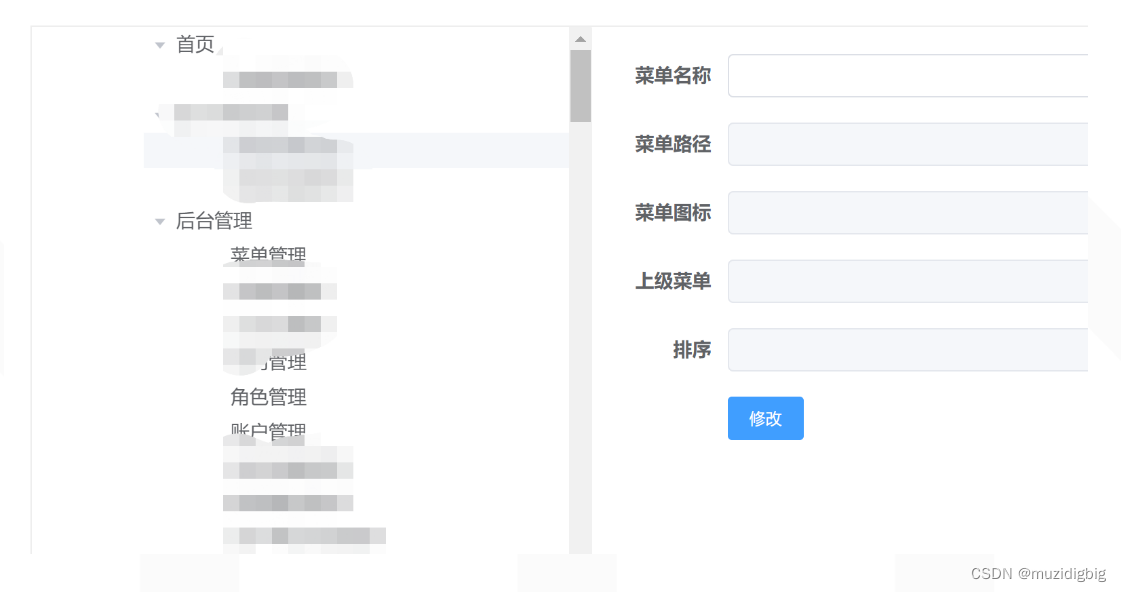vue强制刷新的方法
前言
在开发过程中,有时候会遇到这么一种情况:
1.切换页面页面没有更新
2.通过动态的赋值,但是dom没有及时更新,能够获取到动态赋的值,但是无法获取到双向绑定的dom节点,
这就需要我们手动进行强制刷新组件,下面这篇文章主要给大家介绍了关于vue组件强制刷新的方案,需要的朋友可以参考下
- 刷新整个页面(最low的,可以借助router机制)
- 使用v-if标记(比较low的)
- provide和inject实现页面刷新
- 使用内置的forceUpdate方法(较好的)
- 使用key-changing优化组件(最好的)
location.reload();
this.$rotuer.go(0);存在问题:
1.强制刷新页面,出现短暂的空白闪烁。
2.h5页面在安卓机方法不兼容。
- this.$rotuer.go(0) 安卓、ios都不支持、pc支持
- location.reload() 安卓不支持 、 ios支持、pc支持
一、强制全局刷新方法1- location.reload()
重新载入当前文档:location.reload();
定义和用法:
reload()方法用于刷新当前文档。
reload() 方法类似于你浏览器上的刷新页面按钮F5。
案例:

点击修改按钮后,重新加载页面,让修改后的结果显示出来。
onSubmit() {...update(...).then(response => {if (response.success) {this.$message({message: response.msg,type: response.success});}setTimeout(() => {this.listLoading = false}, 1.5 * 1000)})location.reload()},PS:如果使用getList()来刷新页面,有可能有时不会有刷新的效果。而用location.reload()方法是肯定会刷新的。
二、强制全局刷新方法2- this.$router.go(0)
经常使用vue的小伙伴看到这个应该很熟悉吧,我们经常用它来实现前进后退,但别忘了它还可以实现自身页面刷新
this.$router.go(0)对于以上两种方法,虽然都可以实现页面刷新,但页面会刷的白一下,给用户的体验非常不好。利用provide/inject组合方式是我目前觉得最好用的方法,而且可以实现局部刷新。下面我们就来详细介绍其用法
三、强制全局刷新方法3- this.$forceUpdate();
<template><div>xxx</div><el-button @click="refresh()">强制刷新</el-button>
</template>
<script>
export default {data() {return {}},methods: {refresh() {// forceUpdate只会强制更新页面,不会更新现有的计算属性。this.$forceUpdate();}}
}
</script>
四、强制局部刷新方法- provide inject和v-if
vue局部刷新
通过设置isReload来解决不刷新问题,原理就是通过 v-if 控制组件容器的出现与消失, 达到重新渲染的效果 , 从而实现我们的目的。
(1)、在父组件Layout.vue的子组件Content.vue 中定义全局方法reload()
注意:provide 和 inject 绑定并不是可响应的。这是刻意为之的。然而,如果你传入了一个可监听的对象,那么其对象的 property 还是可响应的。
<template><section class="app-main"><transition name="fade-transform" mode="out-in"><router-view v-if="isReload1"/></transition></section>
</template><script>
export default {name: 'AppMain',data() {return {isReload1: true}},// 祖先组件向其所有子孙后代注入一个依赖,不论组件层次有多深,并在起上下游关系成立的时间里始终生效。provide() {return {reload1: this.reload1,};},methods: {reload1() {this.isReload1 = false;this.$nextTick(() => {this.isReload1 = true;});},}}
</script><style scoped>
.app-main {/*58 = navbar */min-height: calc(100vh - 58px);position: relative;overflow: hidden;
}
</style>在需要引入的子组件中引入
inject: ["reload1"]
然后在子组件调用此方法:
<template>
<div class="page"><button @click="reloadFun">刷新</button>
</div>
</template><script>
import Vue from 'vue';export default {inject:['reload'], // 使用 inject 注入 reload 变量 data(){return{}},methods: {reloadFun(){this.reload(); // 直接使用}},}
</script>这种方法比第一种方法的用户体验好一些。
五、使用 v-if
<template><div v-if="show">xxx</div><el-button @click="refresh()">强制刷新</el-button>
</template>
<script>
export default {data() {return {show: true}},methods: {refresh() {this.show = false;// this.$nextTick可实现在DOM 状态更新后,执行传入的方法。this.$nextTick(() => {this.show = true;});}}
}
</script>
六、使用key-changing优化组件
原理很简单,vue使用key标记组件身份,当key改变时就是释放原始组件,重新加载新的组件。
<template><div :key="key>xxx</div><el-button @click="refresh()">强制刷新</el-button>
</template>
<script>
export default {data() {return {key: 1}},methods: {refresh() {this.key++; // 或者 this.key= new Date().getTime();}}
}
</script>
